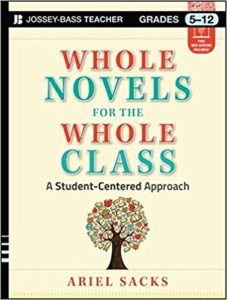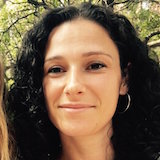2 Lessons Worth Sharing about Teacher Coaching
Teaching students is what I’ve done daily for my entire career. Alongside this primary work, I have served as a mentor, coach, and workshop leader for other teachers for about 10 years.
Though I’ve moved slowly into working with adults, I’ve come to love it, and see how important it is to student success.
Part of what I love about being a coach is that, when we get it right, we create bridges between our varied experiences and classroom contexts, so that teaching knowledge flows in many directions, and teaching becomes a less isolated, more connected profession.
Effective coaches don’t ride high horses
One of the first lessons I had to understand about my role as an instructional support coach is that I am nobody’s boss, and I can’t force anyone to do anything. And that’s actually not my job, as a coach, or as a teacher in general.
I know how wary most teachers are, myself included, of outsiders coming in and passing judgment, telling us what to do, and undermining our professionalism. No matter how strongly those of us in coaching roles may believe in our own teaching methods or specific answers to problems, if we want to help other teachers and their students, we need to step off of the high horse—even if we’ve been given one to ride by someone else.
I think the key to staying grounded is recognizing that, on the one hand, there are core concepts that make for effective teaching, and our understanding and dexterity with these concepts deepens over time through committed, reflective practice.
At the same time, though, teaching is context-specific and “a relational art form,” as my mentor Madeleine Ray has said. The interaction between a specific teacher, the group of students, the content, the environment and the world surrounding them at any given time, is always unique.
The teacher-coach dynamic is complex
There’s a kind of paradox here. As a coach, we have much to offer; yet we are entering into this extremely complex dynamic. Our way in is usually through dialogue with the teacher in the equation, but we generally can’t transmit our “knowledge” directly, because learning is more complex than that, and teacher learning occurs where all of the factors of the teaching context connect.
I remember an early coaching experience when I met with a teacher who had asked me for help and was eager for concrete advice on what to do to achieve a particular outcome. Through conversation, and by sharing some materials, I did my best to give very specific instructions on what I would do in his situation.
The teacher took my instructions to heart and tried implementing them right away. This was an attempt on both of our parts at a direct transaction of my knowledge to his classroom. What I observed in the classroom later, however, looked almost nothing like what I thought I had described!
At first, my immature coaching self felt frustrated. But when we debriefed afterward, I started to understand how the teacher was interpreting my advice, and he started to understand what I meant. More importantly, we reflected on what had gone well and what needed work.
What came out of that conversation was that, even though the teacher had asked for advice on teaching a reading strategy, he later shared that he felt like what actually was getting in the way was something about his tone with the students – a lack of connection – which wasn’t helping to motivate students to engage in their reading.
His reflection revealed a layer of the teacher-student equation that my initial “tutorial” hadn’t even touched upon, and our discussion got to a deeper, much more productive place because of it. The ensuing conversation was challenging, but illuminating, and pointed the way toward real progress for both of us.
My take-away: teacher growth is as complex as any process of human development. My effectiveness as a coach depends on my ability to understand and connect with a teacher or team, in context, rather than simply trying to transfer my experience to someone else.
Even in the most friendly of circumstances, speaking from on high usually doesn’t help us meet our goals.
Sometimes we have to go out on the limb
Although my teaching experiences don’t translate directly into another teacher’s practice, I’ve learned to value the knowledge that I’ve gained through my own work, and the principles that guide me as an educator.
I think principles translate across contexts, and I’ve had to get comfortable asking a difficult question or hashing out a professional argument at times. My cue for stepping up to a conflict is when I realize that by not speaking up, I would be tacitly agreeing to a decision that I don’t believe would serve students well. I can’t control anyone, but I have a responsibility to use my voice.
It was a little scary when I first had to decide whether to have an important argument or to keep my thoughts to myself as a coach. I had been hired to help a small team of sixth grade English teachers – all in their first few years of teaching – with unit planning. They first wanted me to review a plan they had already drafted and were about to implement, and then we would work together to plan their subsequent unit from scratch. They had done a lot of work, creating very detailed plans around a short novel.
It would have been easiest in the moment for me to say, “This looks good,” and move on to the new plan. But that would have been a lie — and, worse, I envisioned the next month or so in their classes being very difficult.
The unit revolved around a book that was not only too difficult for the vast majority of sixth graders, but a lot of the content was neither developmentally meaningful nor appropriate. I imagined students resisting reading, and the teachers compensating by over-teaching or “pulling teeth.” In fact, I had been hired to help the teachers address this very problem. I couldn’t turn away from it now.
If I told my whole truth, there was a chance the teachers would walk away from that first session saying, “We never want to see Ariel again,” and I would have to be okay with that. I decided in the moment that would be a better outcome than sacrificing my integrity to keep things smooth for now, knowing the teachers and students would pay the consequences later.
I ended up raising my concerns, a little too lightly at first. Then I took it a step further, saying, “I feel obligated to share that if this were my sixth grade classroom I simply would not use this book as a whole class study. I don’t think their experience of it will match the goals you have for them.” There was a pause, at which point they understood that I really was concerned, that I was going out on a limb for a reason.
It was uncomfortable for a little while, but the teachers pretty quickly moved forward, posing the pertinent question: “How can we adjust the plan to be more developmentally appropriate, without starting from scratch?”
We found a way, and that day set us on a productive and honest path in our work together. I also had introduced a core principle in effective teaching (which was emphasized in my own Bank Street College training), which is that the developmental stage of the students is a key factor in developing curriculum content.

Coaching is about creating real connections
The transition from teaching children to supporting teachers has introduced me to new challenges and helped me to grow as an educator. For those beginning this transition, I hope these two lessons I’ve learned might be a helpful frame.
First, we are all in this profession together. Coaching happens in the context of an interactive learning relationship, not a one-way street, and it’s so much more interesting and positive that way!
Second, teaching is a high stakes profession. You will have to reflect on your core principles, those that you would be willing to risk discomfort to maintain. Then you’ll need to find your strong voice and recognize those moments that require you to respectfully speak up and not go with the flow. This way, we are creating real connections, based on the messy, rewarding process that is human learning.
______________

Ariel’s work as a teacher leader with the Center for Teaching Quality involved her in co-authoring Teaching 2030: What We Must Do For Our Public Schools – Now and in the Future. She was also featured in the CTQ book Teacherpreneurs: Innovative Teachers Who Lead Without Leaving. Visit her blog and follow her on Twitter @arielsacks.






































